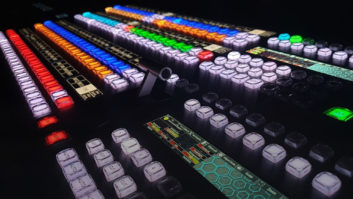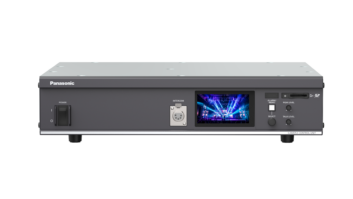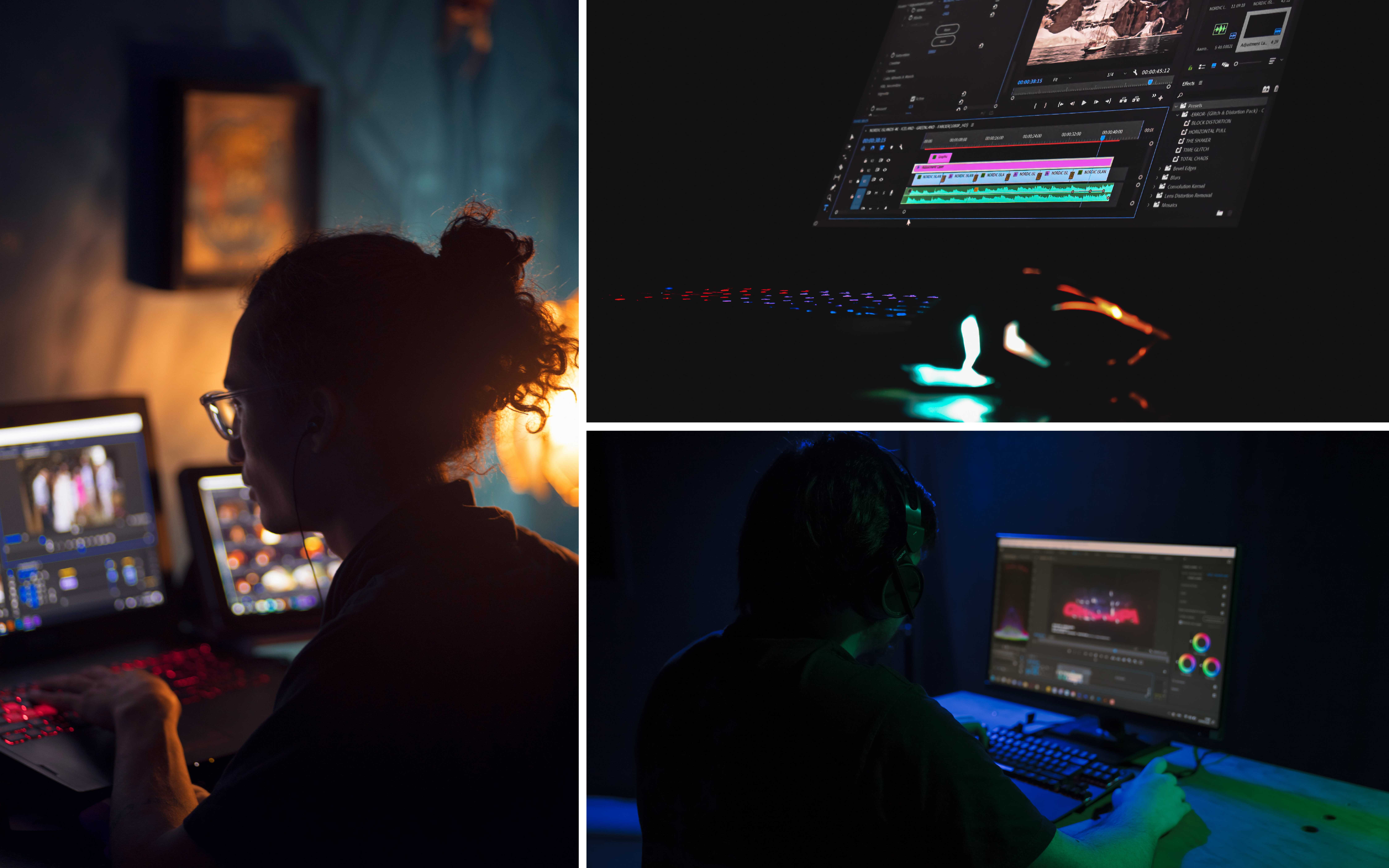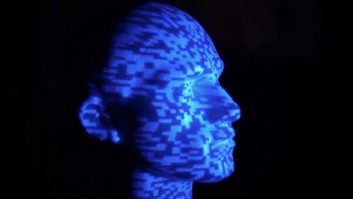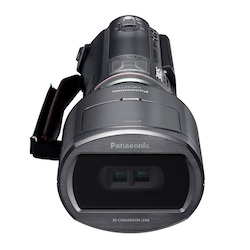
From TVBE’s Acquisition Newsletter: To compliment all the 3DTV sets expected to be sold this Christmas, Panasonic has announced the first 3D consumer camcorder.
The new HDC-SDT750 comes with a 3D conversion attachment, which enables it to record right-eye and left-eye images simultaneously through its two lenses. The 960×1080 pixel images are recorded using the side-by-side method. The 3D lens prevents the use of the camera’s 12x optical zoom, and it apparently only works effectively in 3D for subjects that are between one and three metres away – mainly due to the short interaxial distance between the two lenses.
Given that the illusion of 3D is essentially created by differences in the horizontal space, halving that space (as this does) is not necessarily a good thing – although the initial reaction to the results at the launch press conference was positive. The images are then stretched to be watched in HD. As it records to a single sensor block, there is no risk of shots getting out of synch, failing to line up, or of the two images having different exposure, colour or other settings. The 3D images also benefit from the camera’s optical image stabiliser, which will be important to stop hand-held 3D shots from being upsetting to watch.
The 3MOS camcorder is basically an SD700, probably the most advanced of Panasonic’s consumer models. When the 3D conversion lens is taken off, it can record full 1920×1080 (50/60p) HD in AVCHD (at 28Mbps), to an SD card, and has an F1.5-F2.8 35-420mm Leica Dicomar lens. The 3D lens pushes the aperture up to F3.2, changes the focal length to 58mm (35mm equivalent), and shifts the minimum illumination from 1.6 lux to 28 lux (for the US 60p version).
Other features include: Time Lapse Recording (one, ten or 30 seconds, one or two minutes), which works in 3D; and 5.1-channel audio recording using five highly-directional microphones.
The camera has manual controls for focus, zoom, iris, shutter speed and white balance settings – although only white balance is available when the 3D conversion lens is attached.
It should be available by October for less than $1,400, and will work with any 3D TV, plugging in via HDMI.
Panasonic has already launched a professional integrated 3D camcorder, the AG-3DA1, that will also be available next month, although it records AVCHD at the lower rate of 24Mbps. Sony and Ikonoskop have also developed similar camcorders.
Interchangeable 3D lens
At the same Tokyo press conference, Panasonic also announced what it claims is the first interchangeable 3D lens – for its Lumix Micro Four Thirds still cameras (they also record video), such as the GH1.
The compact 3D lens houses twin lenses within the diameter of the lens mount, and should work in a similar way to the lens attachment on the HDC-SDT750.
It should be available before the end of the year, although no price was revealed.
Acquisition News is TVBEurope’s twice-monthly newsletter produced in association with the Guild of Television Cameramen. Focusing on the camera sector of the market, it delivers the very latest news and views on camera equipment, technologies and accessories to the European broadcast industry. Register free here.
